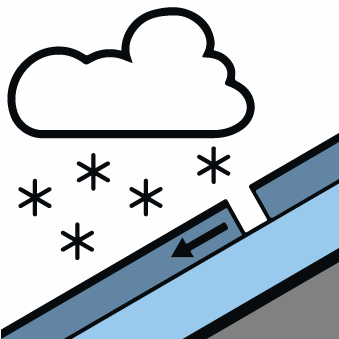
Danger level
 | treeline |
|  |
|  | ||||
|  |  |

Increase in avalanche danger as a consequence of new snow and strong wind. Fresh wind slabs require caution.
Fresh snow and large quantities of wind-drifted snow represent the main danger. The fresh wind slabs can be released easily in all aspects at high altitudes and in high Alpine regions. The avalanche prone locations are sometimes covered with new snow and are difficult to recognise. On wind-loaded slopes natural dry avalanches are possible as the day progresses, in particular medium-sized ones.
Avalanches can in some cases be triggered in deep layers and reach large size. Caution is to be exercised in all aspects also in areas close to the tree line.
Gliding avalanches are possible.
Extensive experience in the assessment of avalanche danger and great restraint are required. Ski touring, freeriding and snowshoe hiking are to be restricted to moderately steep terrain as far as possible.
Snowpack
dp.6: cold, loose snow and wind
dp.5: snowfall after a long period of cold
In some localities 20 to 50 cm of snow, and even more in some localities, will fall. As a consequence of a strong wind from southwesterly directions, further wind slabs will form. The brittle wind slabs are barely recognisable because of the poor visibility. The old snowpack will be in some cases prone to triggering. Whumpfing sounds and the formation of shooting cracks when stepping on the snowpack and field observations confirm poor snowpack stability.
Tendency
Fresh wind slabs require caution. The avalanche danger will increase.





